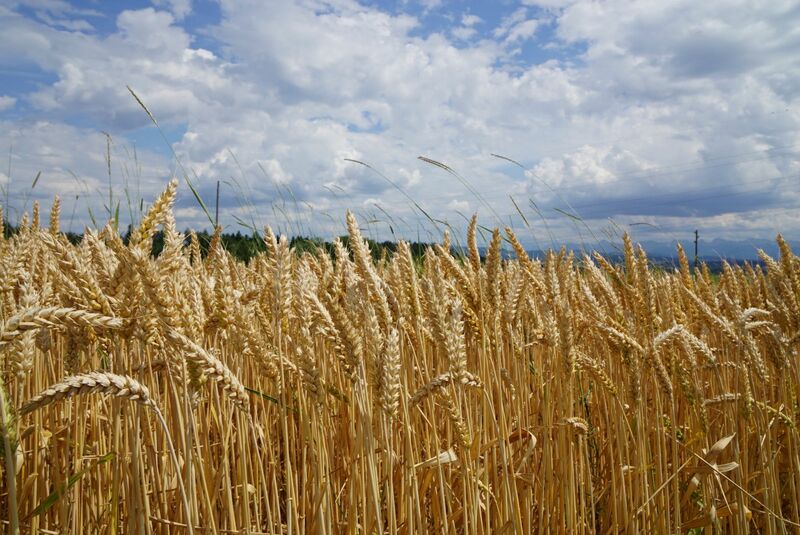
Last Week’s Moves
Corn 597-2 (+2.18%) | Soybeans 1434-0 (+0.47%) | SRW Wheat 656-0 (+5.94%)
KC Wheat 848-0 (+11.69%) | Live Cattle 161.925 (-1.77%) | Lean Hogs 83.625 (-6.58%)
__________________________________________________________________
Welcome to your weekly agriculture report, where we cover everything you’ll need to know for the week ahead. This week, challenges mount for Ukrainian Farmers and weather conditions impact crops across the US.
Challenges Mount for Ukrainian Farmers Facing Conflict, Blockades, and Contaminated Lands
The ongoing conflict in Ukraine has placed grain growers in a difficult situation. Those operating in areas that are no longer under Russian occupation are risking their lives to clear their land of explosives before the critical spring planting season can begin. However, even if they manage to do so, they are facing significant challenges due to Russia's blockade of numerous Black Sea ports and neighboring countries' restrictions on Ukrainian grain.
- Crises cause crop cuts… As a result of these dual crises, many farmers are being forced to reduce their crop production. Bottlenecks in transporting grain by both land and sea are also resulting in losses, with an expected decline of 20% to 30% in grain output, lower-quality crops, and the potential for thousands of bankruptcies next year.
- Grave global grain shortage… According to Pierre Vauthier, the head of the U.N. Food and Agriculture Organization in Ukraine, the significant decrease in grain crops could potentially endanger global food security.
- Mines and millions of lost hectares… As per the FAO, 90% of agricultural enterprises experienced a loss in revenue, and 12% reported contamination of their lands with mines. Last year, the land area used for growing grain decreased to 11.6 million hectares (28.6 million acres) from 16 million hectares (around 40 million acres) in 2021, and it is projected to decline further to 10.2 million hectares (25.2 million acres) this year.
Weather conditions impact crops across the US
By April 30, significant headway had been achieved in planting corn, with double the percentage of corn planted compared to the same time last year. This positive trend has continued into the first week of May, due to drier-than-usual conditions that have been observed across the Corn Belt.
- Dire drought deepens… Although the High Plains are still experiencing the most severe drought conditions, the dryness and drought have recently worsened in Missouri and Illinois. The combination of dryness and windy conditions in Illinois caused dust storms last week, which tragically resulted in fatalities on the interstates.
- Precipitation progress… The good news is that there is a higher chance of precipitation in the Corn Belt during the second week of May. Although it is uncertain whether the showers and thunderstorms will be evenly distributed, many regions are eager to receive any amount of rainfall at this point. However, it is important to monitor the possibility of severe storms, which should not be a concern until more of the crop has emerged.
- Weather woes… The melting of a significant snowpack in the northern Plains and upper Midwest has caused flooding along parts of the upper Mississippi River. This has endangered properties, flooded fields, and disrupted supply shipments. This is a significant change from earlier this year when the Mississippi faced record low water levels.
Weather conditions are having a significant impact on farmers and crops across the US. Crop experts report that the production prospects for the US winter wheat crop are at their lowest in recent history in the central regions of the Great Plains due to a three-year drought.
- When it rains, it pours… Recent rainfall in western Kansas, Oklahoma, and Texas failed to provide substantial relief for struggling wheat crops, which are now stunted and in some cases, beyond recovery. As a result, some growers have already begun to write off a portion of their crop, with the possibility of more acres being abandoned before the harvest season in June.
- Worst weekly wheat… According to weekly wheat condition ratings released by the U.S. Department of Agriculture (USDA), the current ratings are some of the poorest recorded since 1986 for this time of the year, with less than 30% of wheat being rated as good or excellent.
- Wheat warnings… According to Matt Herrington, an analyst with consulting firm World Perspectives Inc., wheat production worldwide is anticipated to be lower in 2023. As global importers have been depleting their supplies, there is less room for error this year. Furthermore, the USDA has predicted that global wheat stocks will decline to a seven-year low by the conclusion of the 2022/23 marketing year.
What else you need to know…
- Funding for farming… According to a U.S. official, the funding for a project led by the United States and the United Arab Emirates aimed at promoting eco-friendly farming methods globally has exceeded $13 billion.
- AI in Agriculture… Purdue has been awarded a grant of $500,000 as a part of a new AI Institute that focuses on climate-smart agriculture and forestry.
- Fertilizer fees fall…This year farmers are encountering considerably lower prices for fertilizer products compared to the previous year. While the current values are still high in historical terms, all fertilizer products have experienced a downward trend in prices over the last 12 months.
That’s all we have for you this week, do you have anything for us? We’d love to hear from you with stories or recommendations for new sections to include! Drop us a line at news@barchart.com with any feedback or input.
More Grain News from Barchart
- Arabica Falls as Drier Conditions in Brazil Benefit the Coffee Harvest
- Wheat Futures Slip Off Highs into Midday
- Mostly Red Soy Market
- Corn Market Mixed at Midday







